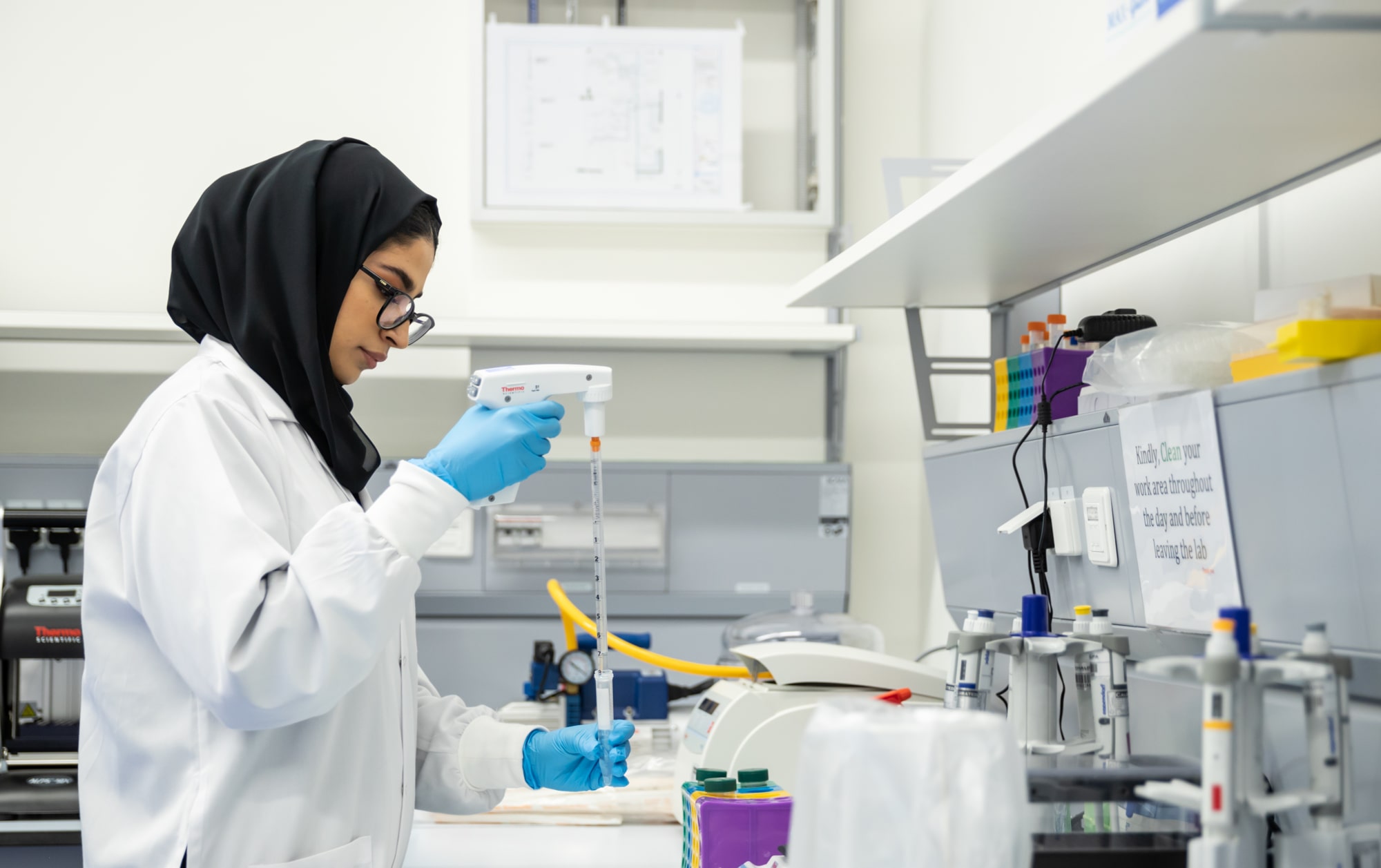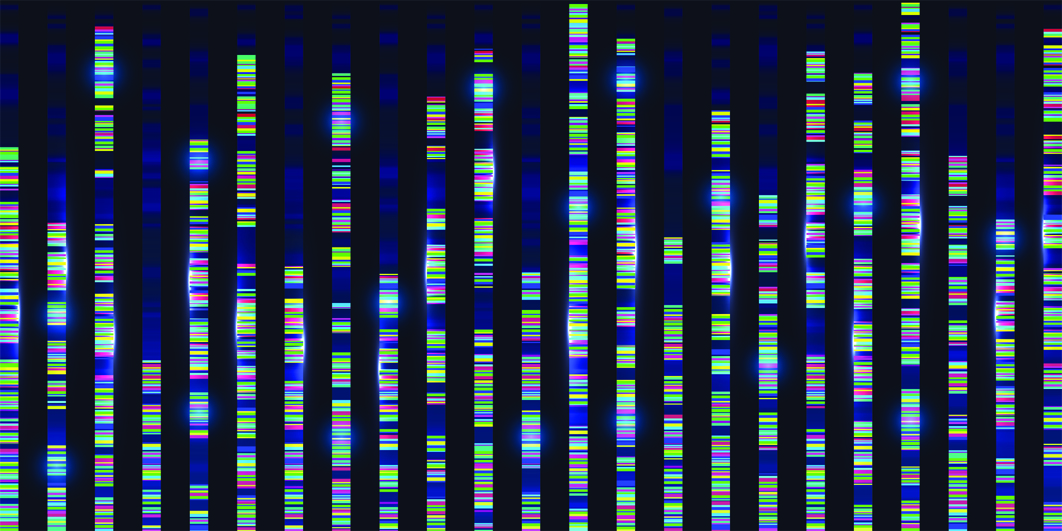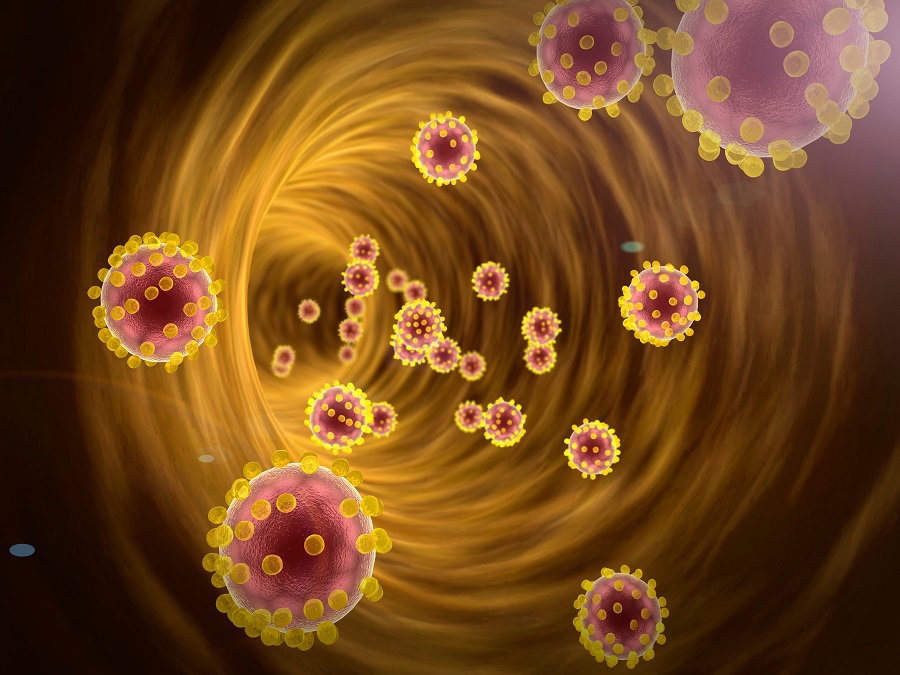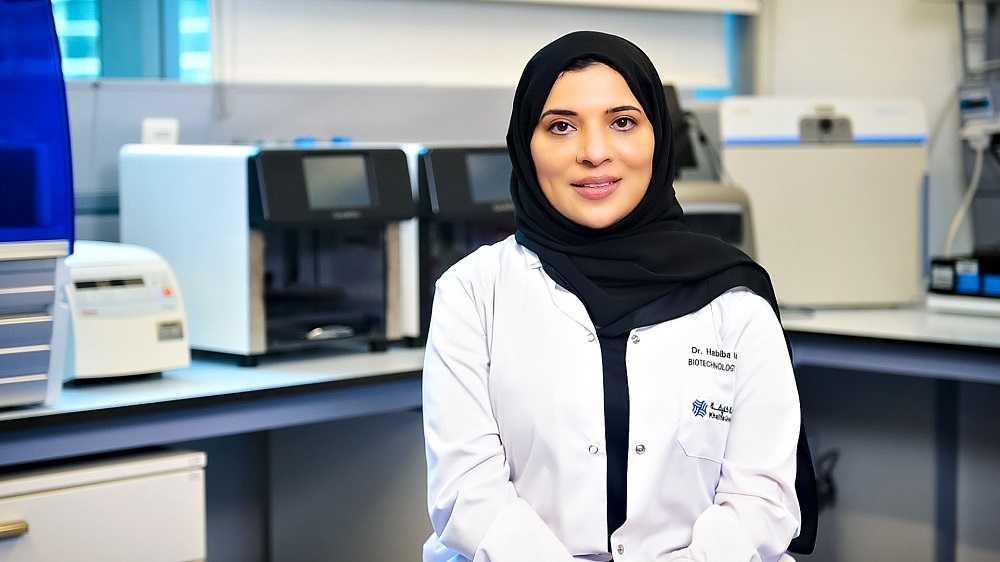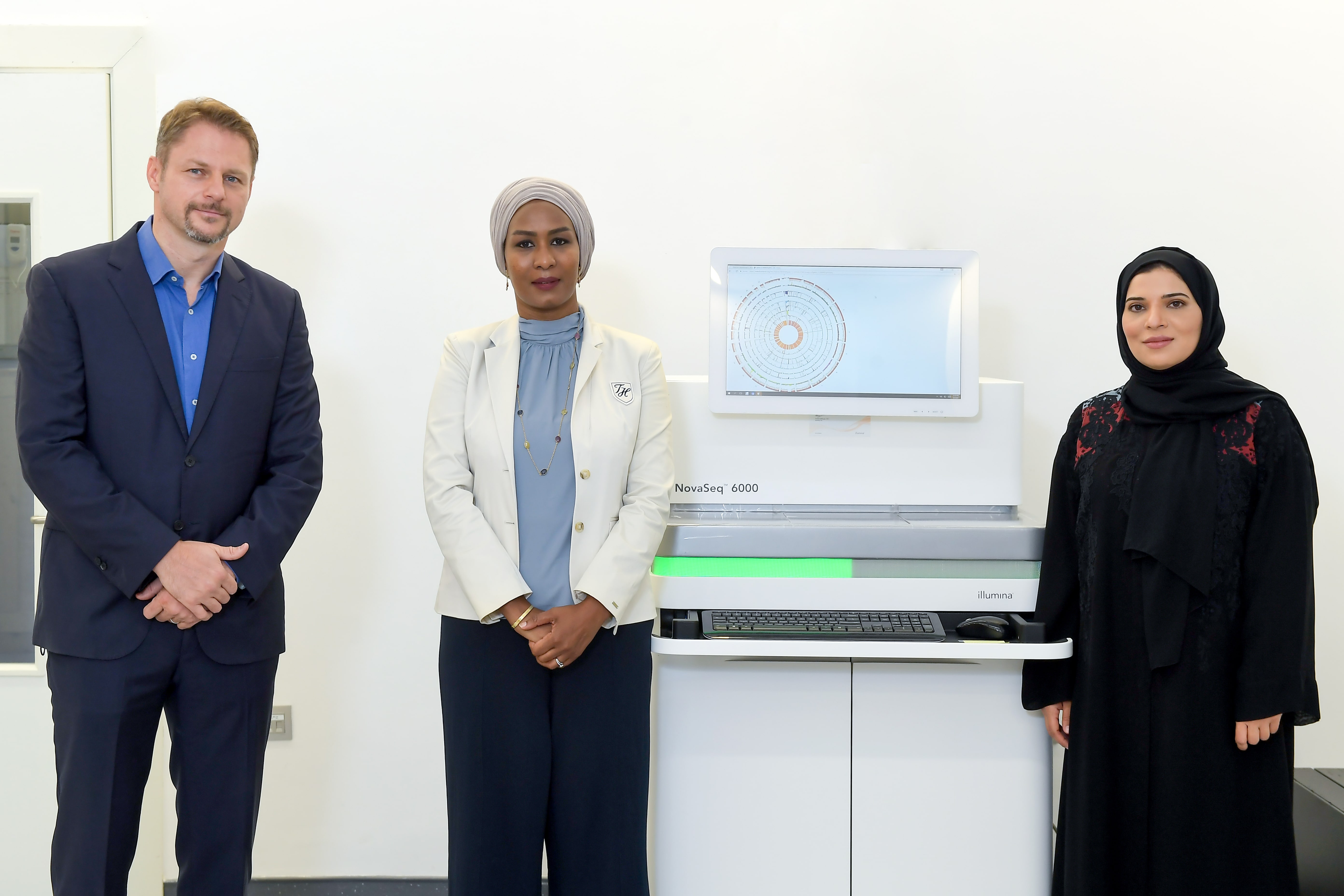
Many populations in the Middle East are unified by common cultural practices, religion, and language. However, there are differences in the genome sequence within and between these groups.
In a research first, a team of investigators from Khalifa University led by Dr. Habiba AlSafar, Director of KU’s Center for Biotechnology and Associate Professor of Genetics and Molecular Biology, has published a study in Scientific Reports introducing the whole genome sequences of two UAE nationals. The study found that unique genome variants exist within the UAE population.
In 2003, the complete human genome was sequenced for the first time and with that breakthrough came an instrumental shift in our understanding of genomics and genetics. Decoding genetic information has led to a greater understanding of human biology, disease susceptibility and drug response to medication, among others. This research constitutes a significant landmark in local biomedical research.
The Human Genome Project originally aimed to map the nucleotides, the building blocks of DNA, contained in a single chromosome set of a human reference genome. Mapping the “human genome” involved sequencing a small number of individuals and then assembling these together for a complete sequence for each chromosome. The finished human genome sequence is therefore a mosaic of several individuals because each human genome is unique. It nonetheless offers a representative example of the human species’ DNA.
Whole genome sequencing (WGS), meanwhile, is the process of determining the complete DNA sequence of a single organism’s genome and provides information on genetic relationships, origin, and susceptibility to specific diseases. WGS has largely been used as a research tool so far but in the future, whole genome sequence data may be an important tool in personalizing therapeutic intervention. If clinicians have access to the information gleaned from sequencing an individual’s genome, they will be able to more accurately predict disease susceptibility and drug response, which will lead to improved health outcomes for individuals and populations.
“Whole Genome Sequencing provides an in-depth description of genome variation,” explained Dr. AlSafar. “In the era of large-scale population genome projects, the assembly of ethnic-specific genomes combined with mapping human reference genomes of underrepresented populations has improved the understanding of human diversity and disease associations.”
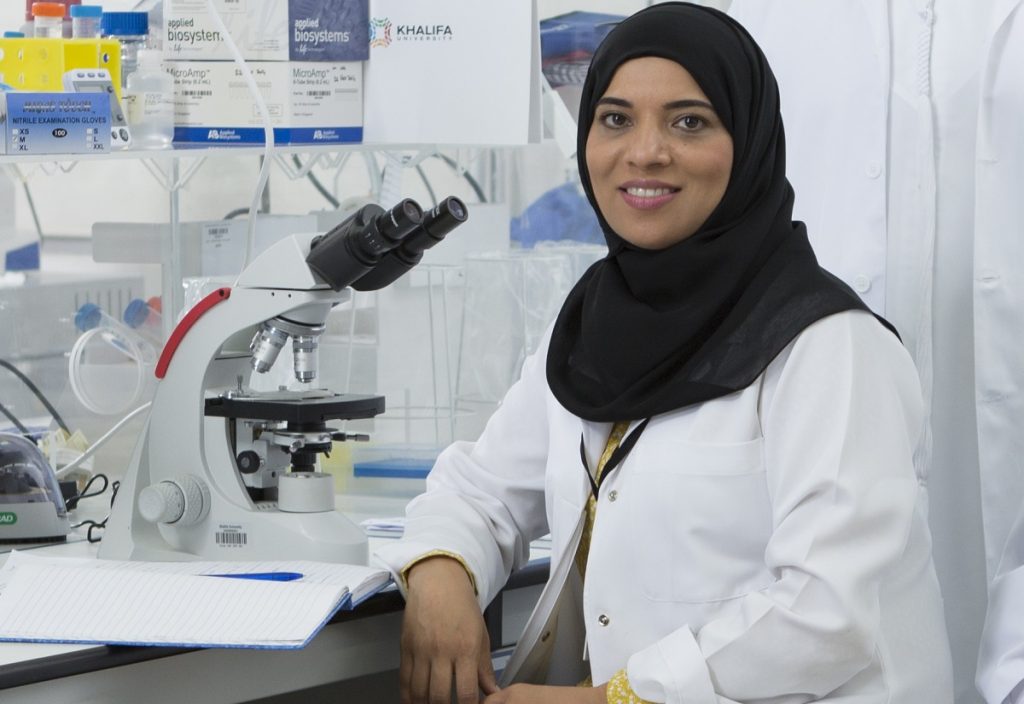
Research indicates that members of particular populations are more predisposed to certain hereditary diseases or conditions than others. Among Emiratis, common genetic and non-communicable diseases include obesity and diabetes, but until recently, Middle Eastern populations comprised just one percent of the genome data in the public domain.
“There is an intolerable gap in the human genome landscape,” said Dr. AlSafar. “Despite the best efforts of the Human Genome Organization and other international consortia, genome data from ethnic groups of the Arab-speaking world is substantially underrepresented.”
Since the completion of the first human genome, DNA sequencing technology has progressed substantially. This Next Generation Sequencing (NGS) technology is now faster and less costly. Using NGS technology, the team at Khalifa University took the first steps to rectifying this.
Of the approximately 10 million people living in the UAE, only about 10 percent are national citizens. Their genome has been greatly influenced by the transcontinental migration of myriad different ethnic groups and the nomadic lifestyles of the Arabian populations originating from the region, particularly the Bedouins.
“The Middle East sits at the crossroads of significant human migration between the African, European and Asian continents,” added Dr. AlSafar. “The eventual development of trade routes further increased bi-directional gene flow through the region, creating the contemporary diversity seen in modern Arabia.”
Interpreting ethnolinguistic differences, geopolitical relations and cultural diversity can only produce so much understanding of the origins of the Emirati population. The need for concrete genetic data motivated the sequencing of the WGS for two Emirati citizens. These sequences now contribute not only to the national understanding of local citizens, but also to the bank of data about middle-eastern populations, including the four WGS from the Kuwait genome project, and 104 WGS from Qatar.
The two citizens were both 87 years old, one male and one female. The male sample was analyzed using Principle Component Analysis (PCA) and supervised biogeographical ancestry analysis (or admixture analysis) in which all populations from the Human Genome Diversity Project Database were used as possible ancestral populations.
“The extent of variability in the two Emirati genomes was determined by comparison to genomes from different world populations,” explained Dr. AlSafar. “This adds credence to the likelihood that the various populations that now inhabit the southeastern tip of the Arabian Peninsula were created by the migration and population movement common throughout the region spanning from Southern Asia across the Levantine region and the Arabian Peninsula to North Africa.”
The sequencing may have been motivated by a desire to better understand population diversity and ancestral origins, but this data has wide-reaching health benefits as well.
Before their genomes were sequenced, the disease status of each participant was known. Both had hypertension among other complications.
“Variants that have previously been shown to be associated with diabetes, hypertension, increased cholesterol levels, and obesity were identified in the genomes of these individuals,” explained Dr. Alsafar. “Disease susceptibility and many inherited traits are affected by interactions between different variants located in multiple genes spread across the genome. It is important to note that these genetic variations alone do not provide definitive diagnosis of a specific disorder.”
Rather, the presence of a genetic variation offers insight to an individual’s likelihood of developing a condition. Knowledge of an individual’s susceptibility improves diagnosis and means more informed decisions can be made for a patient’s treatment. The patient’s genetic information can be used to determine optimal doses of treatment and the likely therapeutic response to certain medications which can help reduce or even eliminate any adverse side effects and contribute to reducing waste and the cost of healthcare in the UAE.
Plus, a more in-depth appreciation of how genes affect a person’s response to drugs among UAE and Arab patients can lead to new drug development, says Dr. AlSafar: “The information compiled will likely lead to the identification of target genes that could potentially lead to the development of novel therapeutic modalities.”
“More importantly, as healthcare moves from one that is based on treating the isease to one based on preventing its occurrence in the first place, genome data will become invaluable.”
In many parts of the world, the cost of treating disease is expected to become prohibitive as the population ages. A sensible means of managing the increasing cost of healthcare is through precise, preventative intervention using personalized genome information. Prevention has the added benefit of ensuring a better quality of life for the individual, a healthier society and a more productive local economy.
The study is also an example of cross-institutional cooperation between researchers and clinicians. Biomedical science is a fledgling discipline in the UAE. Nevertheless, as competencies in molecular research and bioinformatics in the country grows, a collaborative approach will only accelerate the process of future discoveries. It is therefore essential that the biomedical fraternity comes together for the sake of contributing towards a healthier nation.
Jade Sterling
News and Features Writer
31 October 2019


